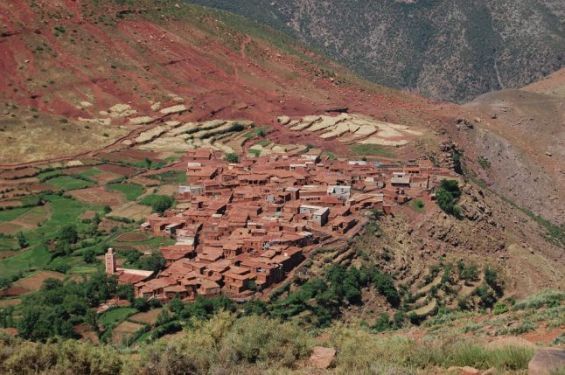Increasing rural-urban interactions and new livelihood opportunities in cities are reshaping oasis agriculture in Morocco’s High Atlas Mountains, a new study has found.
Published on Monday by the British weekly scientific journal Nature, the case study examines the oasis of Tizi N’Oucheg, located 60 km from Marrakech. Once a self-sufficient community producing food grains and livestock, this oasis has seen its traditional agricultural activities significantly altered over the centuries due to changing rural-urban dynamics.
The study, conducted by three researchers from the University of Kassel, Germany, attributes these changes to improved connections to cities. These links have reduced the community's reliance on traditional farming, shifting income sources from agriculture to remittances sent by family members working in urban areas and to the tourism sector.
These transformations are part of a broader rural-urban shift occurring in Morocco. Using surveys of agricultural practices, population data, and meteorological records combined with advanced GIS (Geographic Information System) techniques, the study analyzes changes in land use and cropping patterns over a 55-year period, from 1967 to 2022.
Tourism, infrastructure and city dependence
The findings show that during these five decades, cultivated land in Tizi N’Oucheg has dramatically decreased—from 13 hectares in 1967 to just 6.8 hectares in 2022. This reduction is attributed to multiple reasons, including the expansion of modern infrastructure and the growing urban influence that began in the 2000s.
«Most surveyed households (68%) reported a one-third decrease in the cultivation of their total fields over the past 20 years», the study notes. «The main reasons cited were a lack of irrigation water (52%), insufficient household labor force (47%), and the fragmentation of fields into small, scattered units due to inheritance», the researchers added.
Farming practices have also shifted significantly, moving away from traditional methods that used natural fertilizers to an increased reliance on chemical fertilizers and the adoption of monocropping, primarily barley, for livestock feed.
Beyond farming practices and livelihood changes, the geography of the Atlas Mountains itself is also a contributing factor. The rugged terrain of the Tizi N’Oucheg oasis has made traditional farming both challenging and discouraging. These geographical challenges have played a role in accelerating rural-urban transformation.
«Decreasing agricultural production and, consequently, the demise of such agroecosystems are not solely due to environmental change, as is widely claimed, but more importantly to declining socio-economic incentives for farmers to engage in traditional agriculture», the researchers explain.
The study also highlights the growing dependency on urban centers. Many residents of the oasis now rely on income from cities, either through remittances sent by family members or jobs linked to the tourism industry. This shift illustrates how agriculture is no longer the primary source of livelihood in the region.
While livelihood adaptation strategies, such as reliance on the tourism sector, may prove profitable in certain contexts, they «often do not lead to the preservation of biodiversity and cultural heritage in traditional oasis systems», the study concludes.





 chargement...
chargement...













